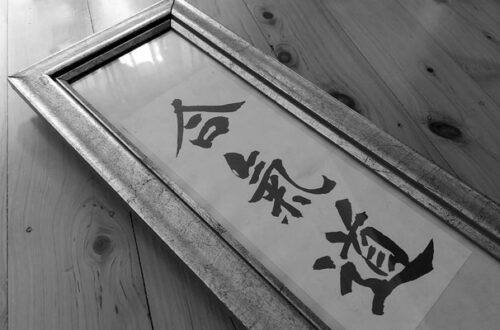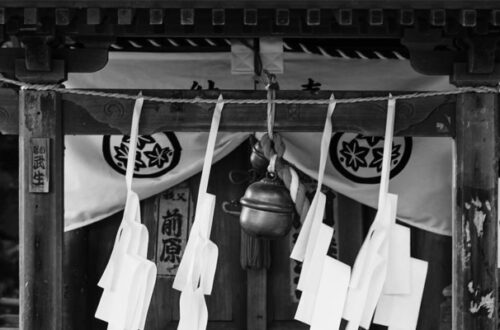
Morihei Ueshiba’s Path from Kenjutsu to Aiki-Ken (Part II)
In 1927, Ueshiba moved to Tokyo and later started teaching in Kobukan 皇武館 dojo. Through his military connections, Ueshiba was later introduced to some of the top martial artists. Among them was Kosaburo Gejo 下条小三郎, a navy commander but also an expert in Yagyu Shinkage Ryu. Gejo was a top student of Yagyu 柳生厳周, the 13th generation head of the Owari Yagyu 尾張柳生 lineage. While Ueshiba and Gejo had more of a friendly relationship rather than a formal teacher/student one, it is generally believed that Ueshiba was exposed to some high level of Yagyu Shinkage Ryu techniques and concepts through this relationship. However, there is also a saying that Gejo was a student of Ueshiba himself.
In 1932, Ueshiba’s daughter married Kiyoshi Nakakura 中倉清, a student of the kenjutsu master Nakayama Hakudo 中山博道, who was the founder of Muso Shinden Ryu 夢想神伝流 iaijutsu 居合術. Nakakura became a regular partner with Ueshiba in his demonstrations, but his role was later taken over by Ueshiba’s son, Kisshomaru when the marriage ended a few years later. Through his teacher Hakudo, Ueshiba was introduced to Koichiro Yoshikawa 吉川浩一郎, the head of the Kashima Shinto Ryu kenjutsu. Kashima Shinto Ryu was founded by Bokuden Tsukahara 塚原卜伝 in the 15th century. It primarily focuses on kenjutsu, but also include bojutsu, sojutsu and battojutsu. It includes many practical battlefield techniques that involve thrusting or cutting the weak points of armor, such as the wrist, carotid artery, and throat. In 1937, Ueshiba arranged to have instructors from Kashima Shinto Ryu to teach at the Kobukan 皇武館 dojo. Two of them named Iida and Aoki according to Kisshomaru, who learnt from them. Ueshiba himself also enrolled in the Kashima Shinto Ryu along with his student Zenzaburo Akazawa 赤沢善三郎. Their names remains in the school record along with the keppan 血判. A keppan is an oath signed by cutting one’s finger and use blood to seal it to emphasize its seriousness.
In 1942, Ueshiba left Tokyo and retired to Iwama permanently. Over time, he incorporated the principles of some of these kenjutsu styles into his Aikido practice, developing a new system of sword techniques that complemented his empty-handed techniques. He created the 7 Ken Suburi 剣素振り, the 5 Kumitachi 組太刀 and the Kimusubi no Tachi 氣結之太刀. While aiki ken today is unique by itself, it is not hard to see some of the similarities with the kenjutsu Ueshiba had learnt, especially with Kashima Shinto Ryu. In an interview with Morihiro Saito 斉藤守弘 (who extensively documented and taught Ueshiba’s ken techniques) from Aikido Journal, Saito mentioned “when O-Sensei studied Japanese martial arts; his spirit became part of the martial art. So, for example, when O-Sensei did the Kashima sword style, it became the Aiki sword. “. Although the context of the conversation was about Chinese martial arts, it suggests that Kashima Shinto Ryu has at least some influence on Ueshiba’s aiki ken from Saito’s perspective. However, many of Ueshiba’s other students were never around or learned very little about his ken techniques developed in this period. As a result, many of his students incorporated their own previous experience of other kenjutsu or iaijutsu arts into their aikido practices. While they can all collectively called aiki ken, differences can exist between different aikido styles.
Author’s Note: We appreciate your readership! This article serves as a preliminary introduction to the subject matter. While we aim for accuracy, we cannot guarantee the content’s precision and it may contain elements of speculation. We strongly advise you to pursue additional research if this topic piques your interest. Begin your AikidoDiscovery adventure! 🙂




